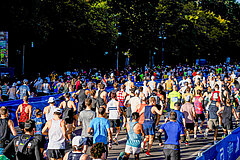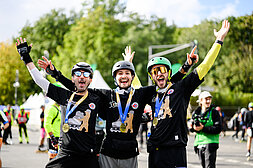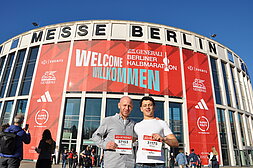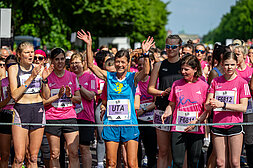Tips for training for the BMW BERLIN-MARATHON
Correct warm-up and cool-down in running
Running is easy. Get into your shoes and off you go on your home lap. Then a quick shower and back on the couch. Right? No, not really. A complete training programme includes a warm-up and cool-down, just like a medal at the finish of the BMW BERLIN-MARATHON.
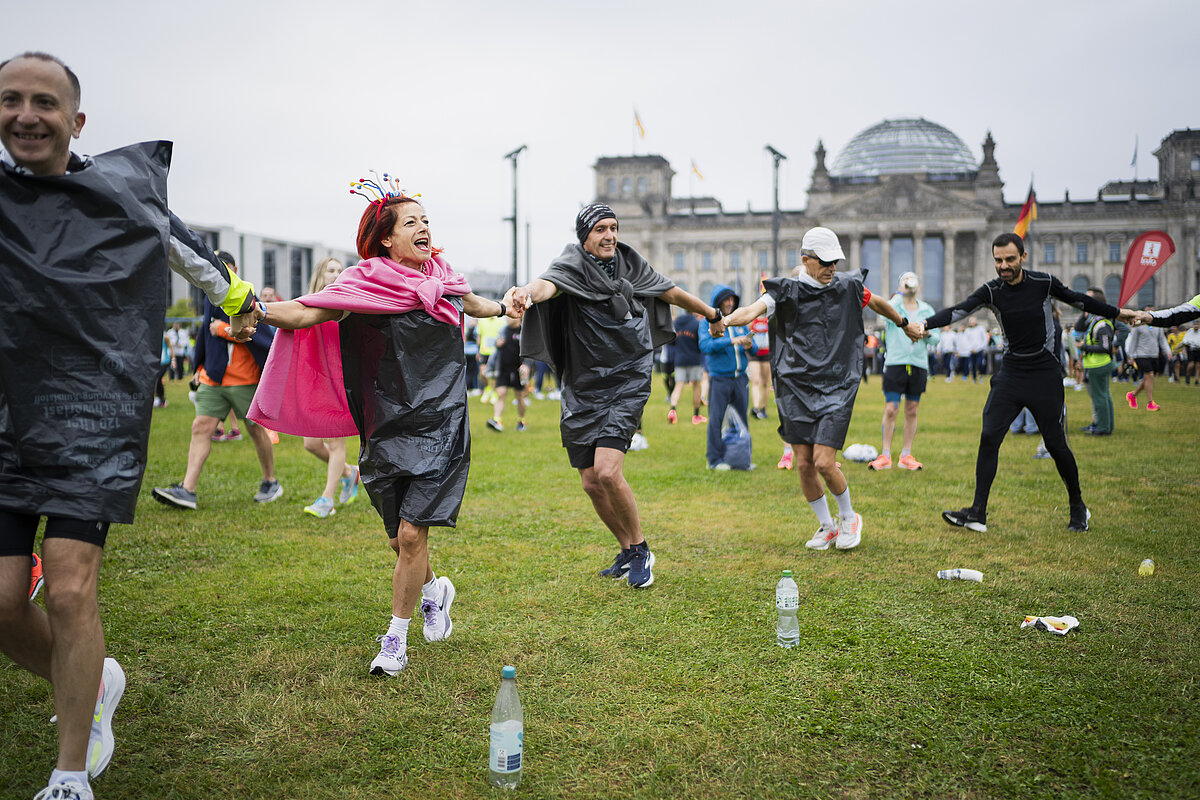
Relaxed warm-up in the group with lots of fun shortly before the start of the BMW BERLIN-MARATHON 2023. © SCC EVENTS / Sebastian Wells
Optimal preparation for running training
But why is warming up before training so important for the body? Warming up is intended to prepare the body and mind for the upcoming exertion. The aim is to get the cardiovascular system going. The heart rate and core body temperature increase, the "engine" warms up, so to speak, and blood flow increases. Among other things, this leads to an increase in the activity level of the muscles, which then work more efficiently and are therefore less susceptible to injury. In addition, the joints are mobilised and the gliding ability of the joints is optimised. Activation of the central nervous system ensures increased coordination and concentration.
Drills minimises the risk of injury
To warm up properly, we recommend a mix of a relaxed run-in, gymnastic exercises and running technique training. The gymnastic exercises should activate and must therefore be performed dynamically. Purely static stretching exercises can increase the risk of injury. A specific warm-up in the form of drills exercises is then carried out in order to get in the right motor and mental mood for the running movements and to improve technique. The duration of the warm-up always depends on the content and intensity of the training session. Warming up takes longer for maximum loads than for basic endurance training.
Tip: As a guideline, around 10 to 30 per cent of the training time should be spent on the preparation part.
Remember: the more intensive the session, the more important the preparation and follow-up work is.
A cool-down rounds off the workout
A cool-down programme is particularly important after a strenuous workout. The aim of active recovery is to shorten the regeneration time, slow down the cardiovascular system and relax the mind. For example, easy running on the grass or light movements that promote the removal of metabolic waste products such as lactate from the muscles can help with this. The intensity of a cool-down should be very low, as the previous strain on the musculoskeletal system was already quite high.
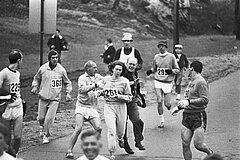
![[Translate to Englisch:] [Translate to Englisch:]](/fileadmin/_processed_/4/1/csm_Vater-Sohn-Freude_c167716000.jpg)
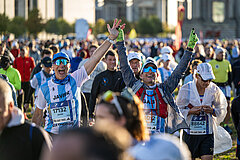
![[Translate to Englisch:] [Translate to Englisch:] Erschöpft und glücklich im Ziel des BMW BERLIN-MARATHON 2024 © SCC EVENTS / Tilo Wiedensohler](/fileadmin/_processed_/d/e/csm_Erschoepft-im-Ziel_5bd2afa34c.jpg)

